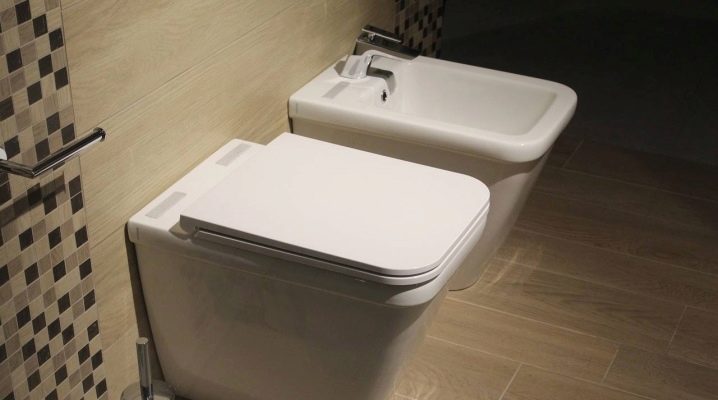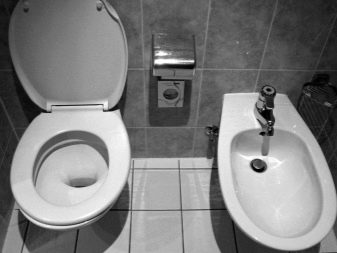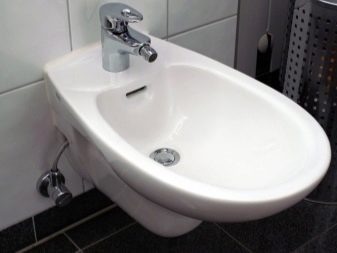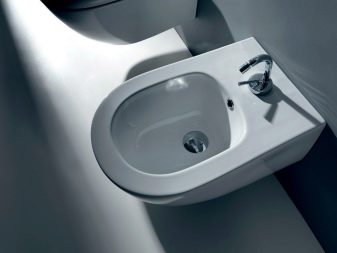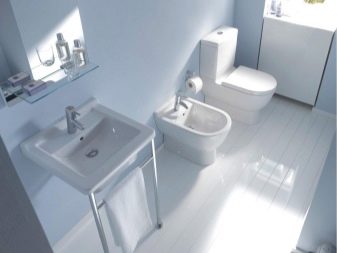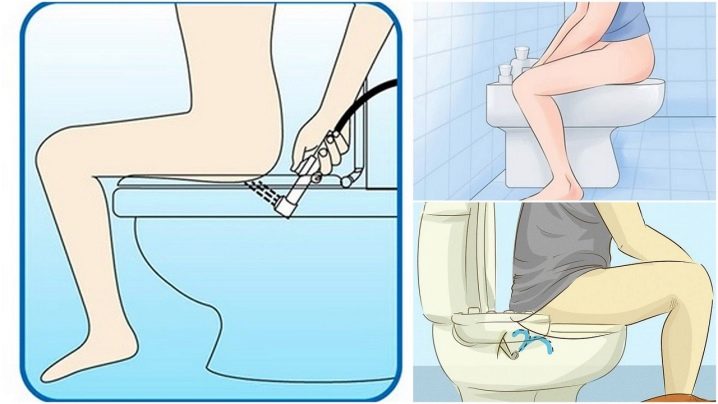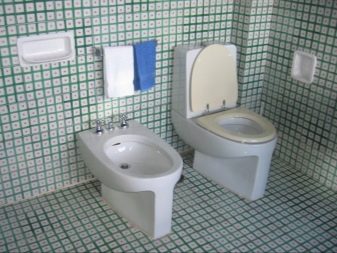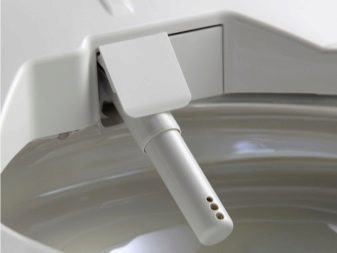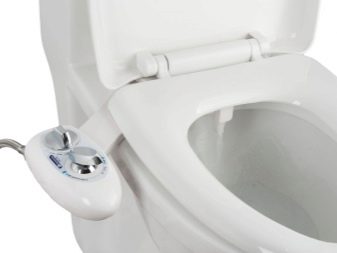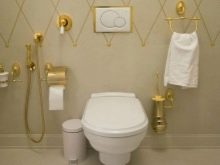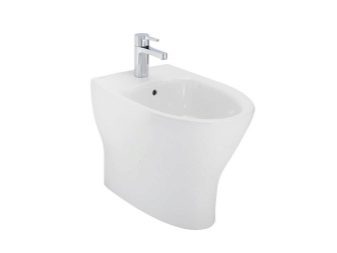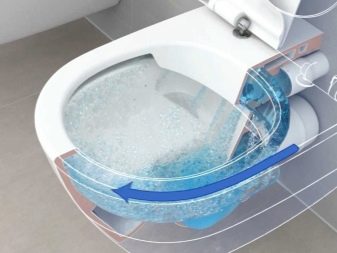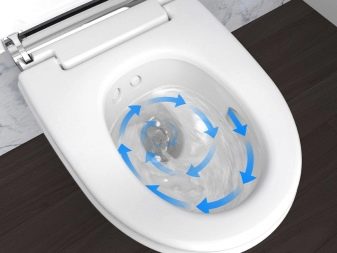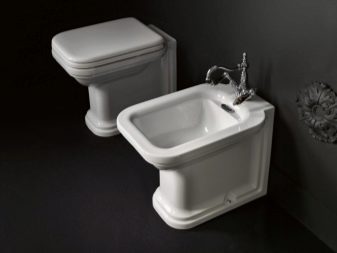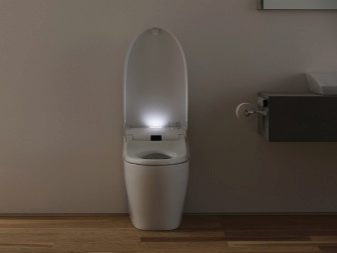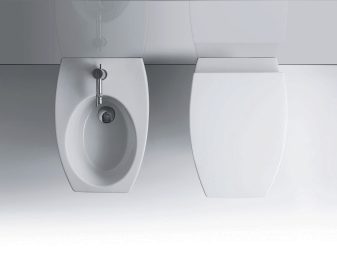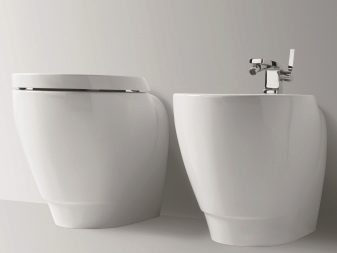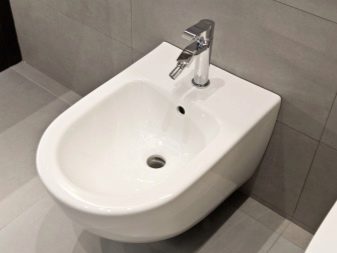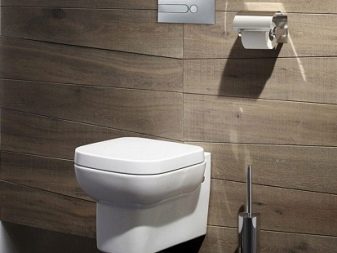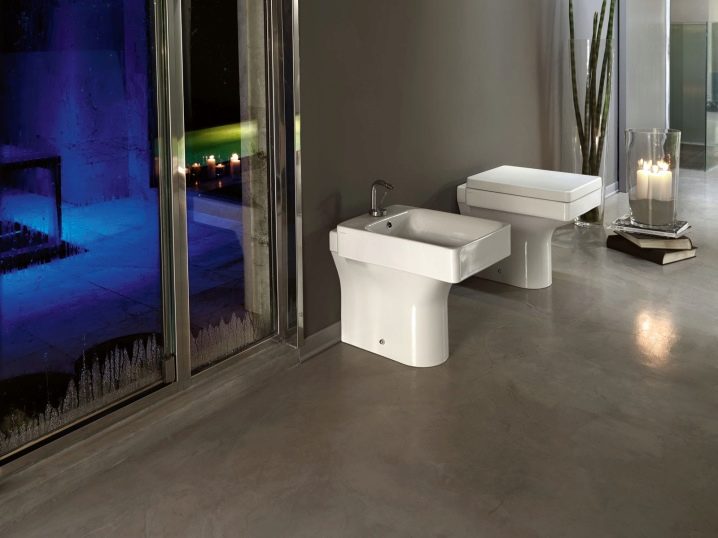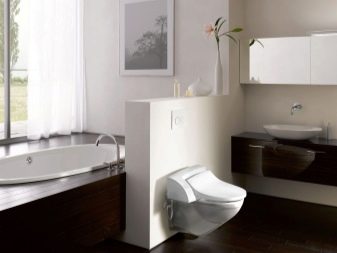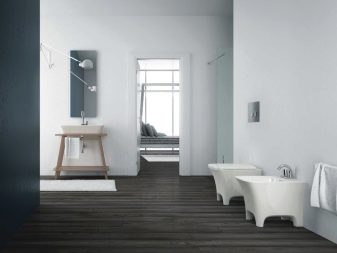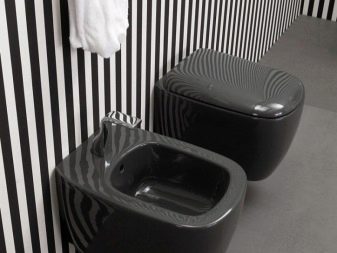How to use a bidet?
Hygiene is a guarantee of health. Everyone knows this and, apparently, that is why in our country the bidet is gaining more and more popularity. If earlier its installation caused only misunderstanding and was considered an excess, today more and more people appreciate the possibility of ablution after visiting the toilet.
What it is?
A bidet is a sanitary device that looks externally similar to a toilet bowl, but is equipped with nozzles and is designed to perform hygienic procedures after using the toilet. Water is supplied from the nozzles under pressure. Washing the genitals and anus reduces the likelihood of inflammatory diseases of the urogenital canal, the pelvic organs.
Laundry is recommended for hemorrhoids, because the water jets produce a gentle massage effect. In addition, the use of paper for this disease is not recommended because it brings pain and discomfort. Laundry allows you to solve this problem.
Mention of the first devices with a similar purpose, refers to the XVII century. The first bidet was a bath filled with water, which were used in France.
What is it for?
As already mentioned, the main purpose of the bidet is to wash out the genitals after going to the toilet. The device simplifies the procedure of washing, helps to maintain personal hygiene. It is important that people with disabilities, as well as users of old age is much easier and more convenient to use a bidet, and not toilet paper. As a prevention of the formation of hemorrhoid nodes, the use of a bidet is also shown.
The bidet is also convenient for washing away babies. In the presence of a shower head, the device is used to clean the bathroom, fill buckets with water, and clean the trays of pets. If necessary, the bidet can rinse your feet or hands, however, provided that the bidet bowl is thoroughly and regularly disinfected.
The main advantage of a bidet is its versatility, practicality, ease of operation and installation. Among the shortcomings can be noted the need to allocate a place in the bathroom for the device. However, this minus is easy to level, using a bidet combined with a toilet. The high cost of automatic devices is justified by the comfort and benefit that bears the operation of the unit.
Types and models
Separate bidets and devices mounted in the toilet are distinguished. Depending on the installation method, floor and suspended structures are distinguished. A feature of the latter is the presence of the installation, the frame in the wall, to which the bidet and its structural bowls are attached. The user can only see the bidet bowl and the control panel or shower head. Floor designs are a familiar bowl on the "leg". Despite the fact that the first look attractive and visually occupy less space, outdoor options are more popular. This is due to their lower cost and ease of installation.
Depending on the management features, there are several types of bidets.
- Mechanical or manual. Adjusting the performance of the first water temperature is adjusted manually.
- Automatic, which is controlled by the control panel or remote control. As a rule, such devices are equipped with a thermostat that ensures the constancy of temperature and water pressure in accordance with the parameters set by users.
Separately, it should be said about the models intended for small-sized products. All of them suggest the rejection of a separate bidet bowl due to limited free space, so the function of the bidet, one way or another, is transferred to the toilet.
The following models are distinguished:
- toilet with built-in bidet - the rim of the toilet bowl is equipped with nozzles;
- lid-bidet - water jets are fed from the nozzles located in the seat cover. This cover is installed on a regular toilet;
- ordinary toilet, equipped with a sanitary shower with a mixer.
The water jet can have several modes, among the most popular it is worth noting the following:
- ordinary;
- intense;
- throbbing;
- soft;
- enriched with oxygen.
The number of nozzles in different devices may be different.Their number is one of the factors determining the cost of the product.
If we talk about the material of manufacture, then the most popular are such models as a bidet, such as:
- porcelain;
- faience.
Both options are considered decent, however, porcelain has a slightly higher quality and longer service life (up to 50 years). It has a smoother, devoid of porosity texture, which contributes to the repulsion of pollution. Naturally, the porcelain model is more expensive. The period of operation of the faience analog is up to 30–40 years.
Depending on the size of the device, there are three varieties.
- The average or standard design has a width of 460 mm, it is fair to note that in most models it is unchanged, the length of the product is 496 mm and the length of the bowl is 271 mm.
- Elongated. The length of the bidet is 528 mm with a bowl length of 304 mm.
- Shortened. The length of the bowl is 470 mm, and the width of the bowl is 245 mm.
Separate bidets also differ in the type of release.
Like toilet bowls, they have the following types of release:
- horizontal;
- slanting;
- vertical.
Finally, devices can be equipped with options such as:
- autonomous heating of water;
- hydromassage;
- warm airflow or hair dryer function;
- thermostat;
- backlight;
- heated seat.
Instructions for use
Use the bidet after each use of the toilet. There are no special requirements for use, as long as it is convenient. Most users prefer to sit down facing the device, however, it depends on the type of model.
Modern models have several modes of operation, including in accordance with the gender of the user. This allows women and men to quickly and comfortably wash away. Some people use toilet paper before they wash, while others use a bidet right away. How to correctly decide only the user. The only thing that doctors recommend using soap.
Before using the device, check the temperature and water pressure. This will prevent burns and splashing water. Towels should be placed next to the device. In terms of hygienic safety, these should be disposable towels or napkins. After use, napkins should not be thrown away in a bidet.Otherwise, do not avoid clogging the drain hole. It is necessary to put a special urn next to the bidet. Many models are equipped with the function of drying and warm airflow, which eliminates the use of towels.
Important! Using a bidet does not replace taking a shower or bath. They are often placed in the hospital and maternity hospital, where there is no full-fledged soul, allowing you to maintain personal hygiene.
The bidet is especially necessary for the care of the female genital organs. Regular rinsing is the best prevention of diseases of the genital organs, allows you to maintain their purity during menstruation, after sexual contact. As practice shows, it is more convenient for a woman to sit facing a bidet. Men, on the contrary, usually have their backs to the bidet. After each use, it is advisable to rinse the bowl using a disinfectant composition.
How to make a toilet bowl?
You can turn an ordinary toilet in a bidet by equipping it with a hygienic shower or by purchasing a bidet seat. Such options are usually relevant for small premises, where the installation of a separate bowl simply has no place. Another option in this case is to install a toilet with a bidet function.However, it requires dismantling the previous device and installing a new one, which may be inconvenient.
The most simple and affordable option is a hygienic shower. It is a shower head and faucet mounted on the wall next to or behind the toilet. The mixer is connected to the sink or water supply system. The shower watering can be equipped with a button, by pressing on which it is possible to turn on the water.
The cover-bidet is a seat that is installed on the toilet and also allows you to wash out immediately after the toilet. It has built-in nozzles, which can be built-in (fixed) or retractable. The latter, according to user reviews, easier to use. The nozzles are equipped with an automatic disinfection system after use, which guarantees hygiene and safety of the device.
Most covers belong to the smart category and have many additional useful features. Among them, it is worth highlighting the heated seat and its lights, self-cleaning system, anti-bacterial coating, warm air blowing function. The microlift system ensures smooth lowering of the cover after use.Comfortable models are having an infrared motion sensor. In response to the appearance of the user, the device automatically turns on the nozzles after a specified period of time, and after use, when the user disappears from the field of action of the sensors, the nozzles and the bowl are disinfected, after which the lid smoothly drops.
The devices are made of durable plastic, which is reliable. It is important that the lid fits snugly to the toilet, and its use does not cause its deformation. This will lead to an uneven distribution of the load, and then - to break the cover. Most covers are equipped with a control panel, some models also have a remote control. The latter is more practical and functional in use for people of lush complexion or users with disabilities.
A feature of the combined devices and models equipped with a hygienic shower is the ability to apply them for their intended purpose, as well as immediately use as a bidet.
Location examples in the home bathroom
When placing a bidet it is logical that you need to install it near the toilet.If we are talking about an automatic device, then it is necessary to mount an outlet nearby, and it is much safer if it is outside the bathroom. It is important that the distance between the toilet and bidet, as well as between the bidet and the walls of the room or furniture, is 25–30 cm. Before the bidet, as well as before the toilet, it is important to leave 60–70 cm free space to the door or the opposite wall.
It is not recommended to bring the bidet and the toilet too close, as it will be inconvenient to wash. If the dimensions of the bathroom do not allow to maintain the recommended distance between the devices, it is more logical to choose either the “two in one” model or to purchase a more compact toilet and bidet. On the bidet side, on the same wall as the device, a towel holder is fitted. Near the toilet, it is usually convenient to hold toilet paper on the next wall. Holders for it, as well as for towels should be mounted at arm's length from the sanitary equipment (at a height of 70–90 cm from the floor).
Since the devices are similar and are located close to each other, it is important that they have a similar design, bowl sizes, shades. Suspended toilet and bidet look stylish and modernlocated on the far wall of the bathroom.
If we are talking about combined bathrooms, then when designing them, two zones are usually distinguished: sanitary and hygienic. The first includes a toilet and bidet, the second - a bath or shower and sink. For greater convenience, you can install a partition between them. By the way, a bidet or toilet bidet can be mounted directly to this partition by selecting the appropriate installation.
In small bathrooms, in the presence of a shower cabin, it is more convenient to place it along one of the long sides of the room, and along the other - other plumbing equipment, including a toilet and a bidet, looks organically.
As for color, snow-white plumbing is recommended for small premises, the use of which will allow to visually enlarge the room. You can make a choice in favor of beige, pastel shades. Brighter colors, as well as dark, black colors should be used carefully, dosed. All plumbing should be done in one color. When buying colored bathroom fixtures, you should be ready for more thorough and frequent cleaning, since traces of dried drops are especially noticeable on the colored surface.
If the toilet has an original design, it is important that the bidet repeats this shape. In this regard, it is much more convenient to immediately purchase both devices.
For information on how to properly use the bidet, see the following video.
